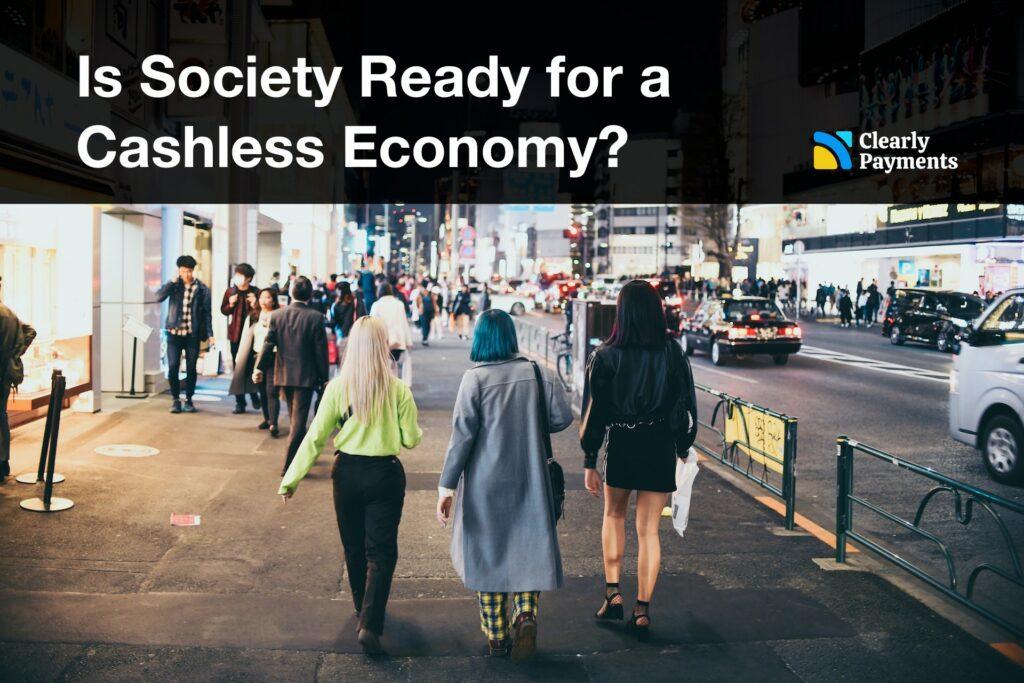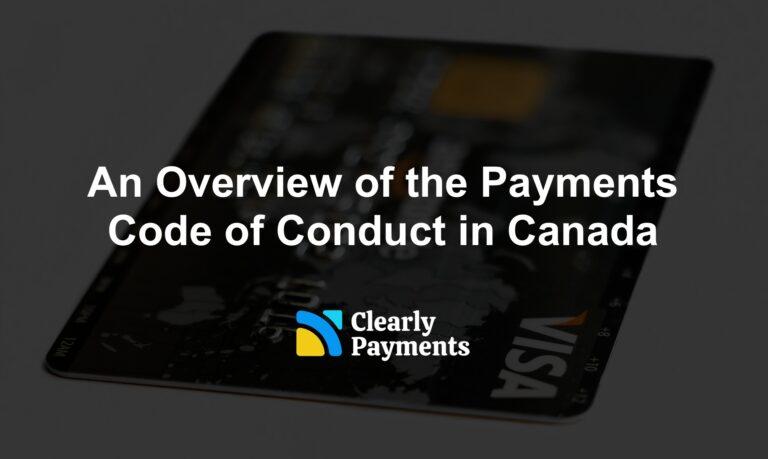The concept of cash is undergoing a transformation. With the rise of mobile payments, online banking, credit card use, cryptocurrency, and contactless transactions, the prospect of a cashless economy is becoming more tangible.
This topic goes into the future of cash and explores whether society is prepared for a world without physical currency. While the transition to a cashless society offers benefits, it also raises important questions about privacy, security, financial inclusion, and the potential impact on vulnerable populations.
A vision of a cashless society
In the near future, a cashless society emerges as a seamless integration of cutting-edge technology and advanced financial systems. Physical currency becomes a relic of the past, replaced entirely by a digital landscape where transactions occur effortlessly and securely. It is a vision where all financial transactions, whether small or large, are conducted seamlessly and securely through digital means. Here’s an imaginative glimpse into this futuristic cashless society.
In this future society, individuals no longer need to carry physical wallets filled with cash. Instead, they rely on electronic payment methods such as mobile wallets, contactless cards, or other digital payment platforms. Payments can be made with a simple tap, swipe, or scan, eliminating the need for cash exchanges or counting coins. Further into the future, personal identification and payment information are securely embedded in biometric implants or wearable devices. With a simple gesture or even a thought, individuals can authorize transactions, instantly transferring digital assets between parties.
Businesses and merchants have fully embraced the cashless ecosystem. Cash registers and cash handling equipment have been replaced by modern point-of-sale (POS) systems that accept digital payments. Whether it’s a small neighbourhood store, a bustling marketplace, or an online retailer, all transactions are seamlessly conducted through secure and efficient digital channels.
Financial institutions and payment service providers play a crucial role in this cashless society. They offer robust and user-friendly digital banking platforms, ensuring that individuals have easy access to their accounts and can make transactions at any time. These institutions prioritize security, employing advanced encryption and authentication measures to protect users’ financial information.
The infrastructure supporting this cashless society is robust and widespread. High-speed internet and mobile networks enable seamless connectivity, ensuring that digital payment services are accessible to all individuals, regardless of their location. Payment terminals and digital payment acceptance devices are readily available in shops, restaurants, transportation systems, and various public spaces.
In this cashless society, financial transactions are not only efficient but also highly transparent. Digital records provide individuals and businesses with detailed transaction histories, simplifying financial management, budgeting, and tax reporting. Additionally, the elimination of physical cash reduces the risk of theft and counterfeiting, enhancing overall security and trust in the financial system.
While the vision of a cashless society offers numerous benefits, it is important to address challenges such as digital divide, privacy concerns, and cybersecurity risks. By addressing these issues through comprehensive regulations, infrastructure development, and educational initiatives, the vision of a cashless society can become a reality that empowers individuals, businesses, and economies to thrive in the digital age.
The benefits of a cashless economy
Advocates of a cashless economy argue that it brings numerous advantages to individuals, businesses, and governments. One of the most significant benefits is convenience. Digital payments allow for quick and seamless transactions, eliminating the need to carry physical cash, count change, or visit ATMs. Additionally, the digitization of payments can reduce costs associated with cash handling, such as transportation, security, and storage, benefiting businesses and financial institutions.
From a security standpoint, a cashless system offers enhanced protection against theft, counterfeit currency, and fraud. Digital transactions leave a trail of data that can be monitored and analyzed for suspicious activity, making it easier to detect and prevent fraudulent transactions. Moreover, the use of biometric authentication, encryption, and tokenization techniques can further bolster the security of digital payments.
Financial inclusion is another potential benefit of a cashless economy. Digital payment platforms have the potential to provide banking services to the unbanked and underbanked populations, especially in developing regions. By leveraging mobile technology, individuals who previously lacked access to traditional banking services can now participate in the formal economy, receive wages digitally, build credit history, and access a range of financial services.
The drawbacks and concerns
Despite the advantages, the transition to a cashless society raises legitimate concerns. Privacy is perhaps one of the most contentious issues. In a digital payment ecosystem, every transaction leaves a digital footprint, potentially allowing governments, corporations, or malicious actors to monitor individuals’ financial activities. Striking a balance between convenience and privacy is crucial to ensure that personal financial data is adequately protected.
Cybersecurity risks also pose a significant challenge. The digital infrastructure supporting cashless transactions is vulnerable to hacking, data breaches, and other cyber threats. A single security breach can have far-reaching consequences, compromising sensitive financial information and eroding public trust in digital payment systems. Strengthening cybersecurity measures, promoting awareness, and investing in robust technological safeguards are vital to mitigate these risks.
The transition to a cashless economy may inadvertently exclude vulnerable populations, including the elderly, low-income individuals, and those without access to reliable internet connectivity. Cash remains a widely accepted form of payment, particularly in rural areas and among marginalized communities. Neglecting the needs of these populations in the pursuit of a cashless future can deepen existing inequalities and widen the digital divide. Measures must be taken to address these challenges, such as providing alternative payment options, improving digital literacy, and ensuring equal access to affordable digital infrastructure.
Navigating the path to a cashless future
To ensure a smooth transition to a cashless economy, several key considerations must be addressed. First and foremost, robust regulatory frameworks are necessary to safeguard consumer rights, protect privacy, and establish clear guidelines for digital payments. Governments and financial institutions must collaborate to create an inclusive and secure ecosystem that fosters innovation while addressing potential risks.
Education and awareness campaigns play a crucial role in preparing society for the shift towards digital payments. Promoting financial literacy, digital skills, and cybersecurity awareness can empower individuals to make informed choices and protect themselves in the digital realm. Initiatives should also focus on training merchants, small businesses, and vulnerable populations to effectively navigate the cashless landscape.
Bridging the digital divide is of paramount importance. Governments and organizations should prioritize infrastructure development to ensure universal access to affordable and reliable internet connectivity. Additionally, efforts should be made to make digital payment solutions accessible to all, including the elderly and those with limited technological familiarity. Collaboration between public and private sectors, as well as non-profit organizations, can help address these challenges effectively.
When will cash be gone?
The complete elimination of physical cash from society is a complex and multifaceted question that is difficult to predict with certainty. While the usage of cash has been declining, it continues to play a significant role in certain segments and regions. The timeline for the disappearance of cash depends on various factors, including technological advancements, cultural shifts, regulatory changes, and societal acceptance.
The pace of transition towards a cashless society varies across countries and even within different demographics. Some regions may adopt digital payment systems more rapidly due to advanced digital infrastructure and greater acceptance of new technologies. On the other hand, regions with limited access to technology or cultural preferences for cash transactions may experience a slower transition.
It is important to note that even in a predominantly cashless society, there may still be certain situations or sectors where cash remains relevant or necessary. Cash can serve as a backup option in emergency situations or when digital systems encounter disruptions.
As technology continues to evolve, mobile payment systems, digital currencies, and other innovative solutions are likely to shape the future of transactions. However, the complete elimination of cash is a gradual process that requires careful consideration of various societal factors and the development of comprehensive infrastructure, regulations, and alternative payment options.
It might be better to think of the time when cash will be used in only specialized situations and only 10% of the time. While predictions can be challenging, it is reasonable to expect that the pace of the digital shift will continue to accelerate in the coming years, potentially resulting in less than 10% of transactions being conducted in cash by 2035.




